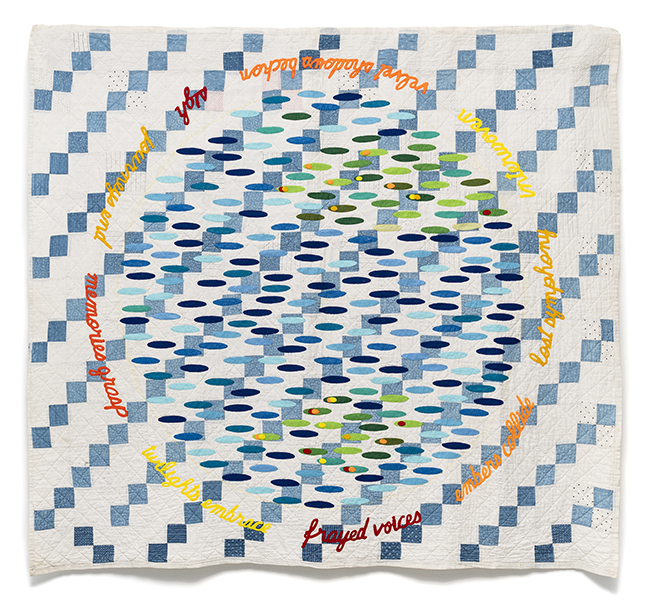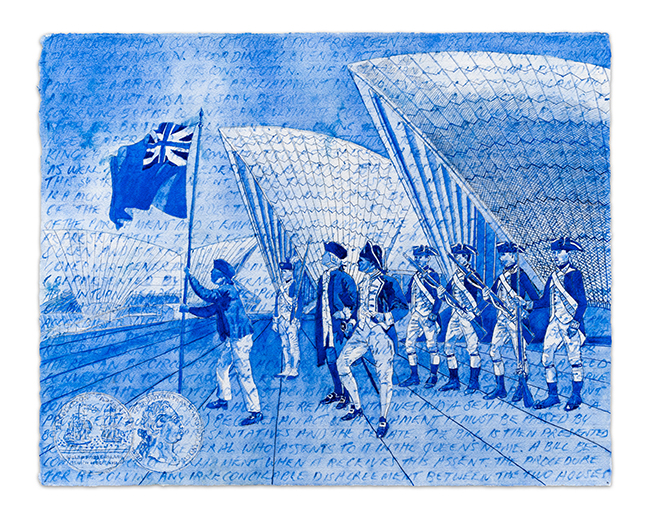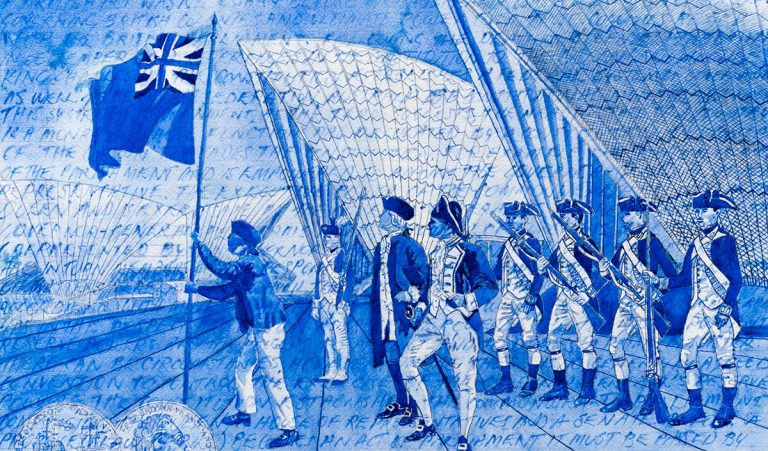Sebastian Di Mauro didn’t just move from Australia to the United States—he uprooted himself. What began as a relocation to Wilmington, Delaware, where his spouse is from, turned into something deeper: a rethinking of self, place, and purpose. Australia had been home, but the pull of a new land, full of contradictions and mythologies, set him on a different course.

As a child, America was a fantasy—built from sitcoms, films, and the shimmering idea of the American Dream. But the real version he walked into was more complex. The glossy surfaces gave way to textures he didn’t expect. The wide roads, the disconnection from familiar voices, the space between places—it all made his sense of identity feel stretched, even frayed. That fraying became part of his work.
Di Mauro’s art has always asked questions—quietly, sometimes even gently—but never without weight. In the Collective Labor series, particularly in the piece Threadbare, he takes something as soft and familiar as a vintage quilt and turns it into something loaded. These aren’t just comforting objects from someone’s attic; they’re repurposed into warnings.

With felt and thread, Di Mauro overlays phrases like “velvet shadows beckon” and “lost symphony”, sewing them into heirloom quilts. The result is unsettling in the best way. These blankets, which once offered warmth and domestic care, now speak of planetary collapse and ecological grief. Each word stitched in becomes a subtle alarm. Each old quilt becomes both relic and prophecy.
But there’s more going on here than climate commentary. Di Mauro’s use of found objects—especially ones tied to women’s work and domestic labor—points to something larger: the kind of care we’ve ignored. The work asks who made these quilts in the first place, who preserved them, and what it means to take that quiet history and push it into public space. There’s a tension between honoring the past and disrupting it. That tension is where the work lives.
In Tethered, another series, Di Mauro shifts focus from material to history. But the questions stay close to the skin. Here, he addresses colonialism directly—taking on Australia’s national identity with a mix of satire and seriousness. In one watercolor, British soldiers and Captain Cook raise the Union Jack, not on untouched beach but in front of the Sydney Opera House. It’s absurd, intentional, and sharp.
Australia’s complicated ties to the British crown are laid bare. Di Mauro isn’t making history paintings—he’s making paintings about how history refuses to stay in the past. Royal symbols, coins, and flags brush up against eucalyptus leaves and concrete walkways. It’s a world where colonial artifacts haven’t disappeared; they’ve just changed shape.
Tethered asks how Australians—particularly those living in a multicultural, modern society—make sense of these lingering symbols. Do they still serve a purpose? Are they reminders, or are they ghosts? There’s no answer, and Di Mauro doesn’t pretend to offer one. What he does is create space for the questions to sit.
His journey from Australia to the U.S. adds another layer. He’s not working from a place of fixed national identity. He’s in-between—watching America’s contradictions while re-evaluating his own roots from afar. The sense of distance, of being away from family and the familiar, has given his work a raw edge. The personal and political are blurred.
Quilts aren’t just quilts. Flags aren’t just flags. The threads that connect identity to geography, and care to survival, are all in play. That’s what makes Di Mauro’s art feel urgent but not loud. He’s not shouting. He’s stitching.
There’s something about his work that stays with you—not because it demands attention, but because it gives you something to turn over later. A word sewn into cloth. A figure standing out of place. A landscape haunted by its own backstory.
Di Mauro’s art is quiet, but it’s not passive. It resists clean answers and invites reflection. Whether through fiber or watercolor, he’s drawing lines between care, collapse, and culture—always asking how we hold things together when so much seems to be coming apart.


